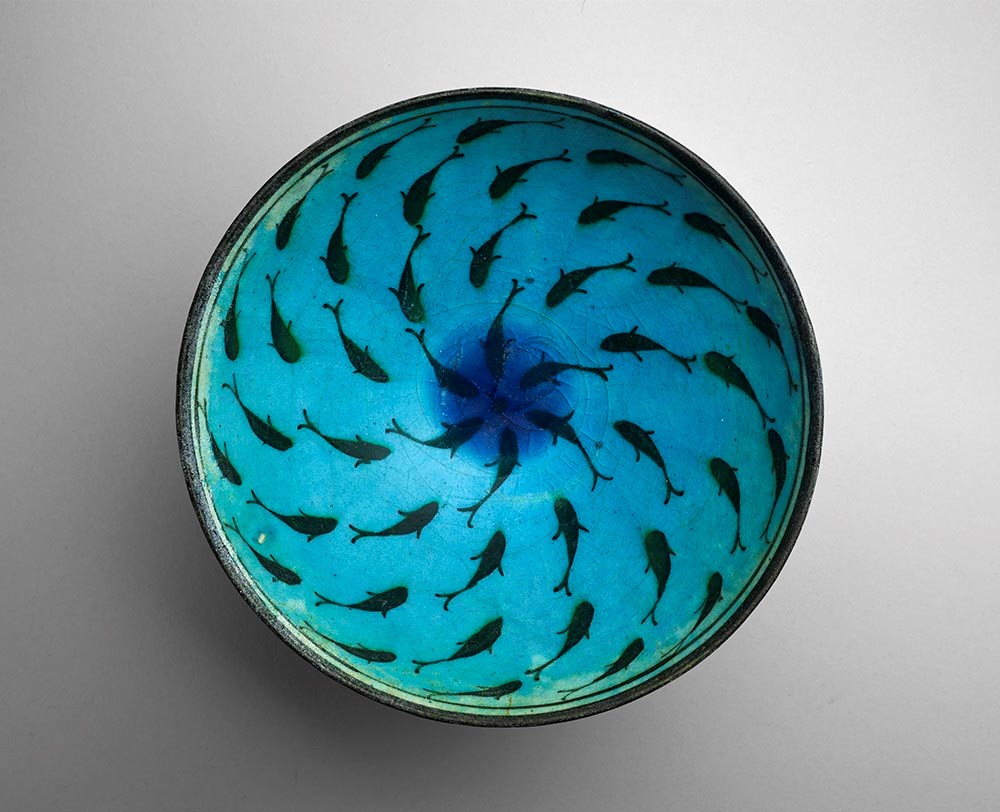
This month, the Museum of Fine Arts, Houston, will unveil a new show of over 100 Iranian artworks dating from the 6th to the 19th century. The exhibition, titled “Bestowing Beauty: Masterpieces From Persian Lands,” is part of the 10th-anniversary celebrations for the museum’s Art of the Islamic Worlds initiative and represents the start of a new five-year partnership with an anonymous private collector.
Since its founding in 2007, the Art of the Islamic Worlds project has seen the museum acquire 64 works and 275 scholarly volumes for its library, open two new galleries dedicated to Islamic art, and enter into a long-term loan agreement with Kuwait’s Al-Sabah collection, one of the world’s greatest collections of Islamic art. (It has also raised over $8 million through fundraising and events like the biannual Art of the Islamic Worlds Gala, which takes place tonight.)
“The initiative is a commitment that the diverse culture of historic Islamic lands will be part of our collection as an encyclopedic museum,” Aimée Froom, the museum’s Islamic art curator, told artnet News, admitting that “10 years ago we had a very small collection.” By filling that gap in its holdings, the museum hopes to foster a better understanding of global cultures among its visitors.
Dervish, Afghanistan, Herat (late 16th century). Courtesy of the Museum of Fine Arts, Houston/a private collection.
“Islamic art is a bit of a misnomer,” she added. “We call our department the Art of the Islamic Worlds to really emphasize it is a tapestry of worlds, with many different ethnicities and regional traditions. It’s not a monolithic entity.”
To that end, Froom has used music as an example of cultural exchange, pairing an Italian still life by Bartolomeo Bettera featuring lutes and Spanish guitars with an example of an actual Ottoman lute. “Although the lute was not invented by Arab musicians, it was literally walked into Spain by musicians,” she explained. “It’s a part of our shared musical heritage and this is the way I want our guests to come in and think differently.”
The study of Islamic art has made great strides in the past two decades, and the audience for such work has grown accordingly, said Froom. “I think our understanding is much more nuanced now, and we’re also starting to look more broadly at questions of global connectivity.”
She’s organized “Bestowing Beauty” through a series of universal themes, such as faith, love, and nature. A 19th-century sculpture of a pear, steel with gold inlay, for instance, illustrates that “all the great monotheistic traditions—Christianity, Judaism, and Islam—really look to the beauty of nature as a reminder of God and the giver of life,” said Froom. “In this steel form, it’s perennially ripe, which I think is fabulous.”
Iran, Qajar period, Pear, (19th century). Courtesy of the Museum of Fine Arts, Houston/a private collection.
Also in the works is the second long-term loan from the al-Sabah collection, which will be unveiled in 2018, after the three-year run of the first selection of objects comes to an end in January.
At a time when relations between the US and the Middle East are strained, with the Trump administration’s travel ban excluding citizens of some Muslim-majority countries from visiting the US, art has the potential to help break down some of the barriers between nations and religions, easing perceptions of “otherness.”
“We want to represent all cultures, all forms of artistic production over history,” said Froom. “Through our past, we can better approach our present and future.”
See more images from “Bestowing Beauty” below.
Attributed to Agha Mirak, Book Binding, Iran (late 16th century). Photo courtesy of the Museum of Fine Arts, Houston/a private collection.
Embroidered Panel, Iran (late 16th–early 17th century). Photo courtesy of the Museum of Fine Arts, Houston/a private collection.
Star Tile, Iran, Kashan or Takht-i Sulayman (possibly 1291–92). Photo courtesy of the Museum of Fine Arts, Houston/a private collection.
Mirror Case, Iran, probably Shiraz (mid-19th century). Photo courtesy of the Museum of Fine Arts, Houston/a private collection.
Mahmud Muzahhib’s Tyranny of a Teacher Is Better than the Love of a Father, folio from a Gulistan of Saʿdi, Uzbekistan, Bukhara (c. 1560). Image courtesy of the Museum of Fine Arts, Houston/a private collection.
“Bestowing Beauty: Masterpieces from Persian Lands” is on view at the Museum of Fine Arts, Houston, 1001 Bissonnet, Houston, Texas, November 19, 2017–February 11, 2018.